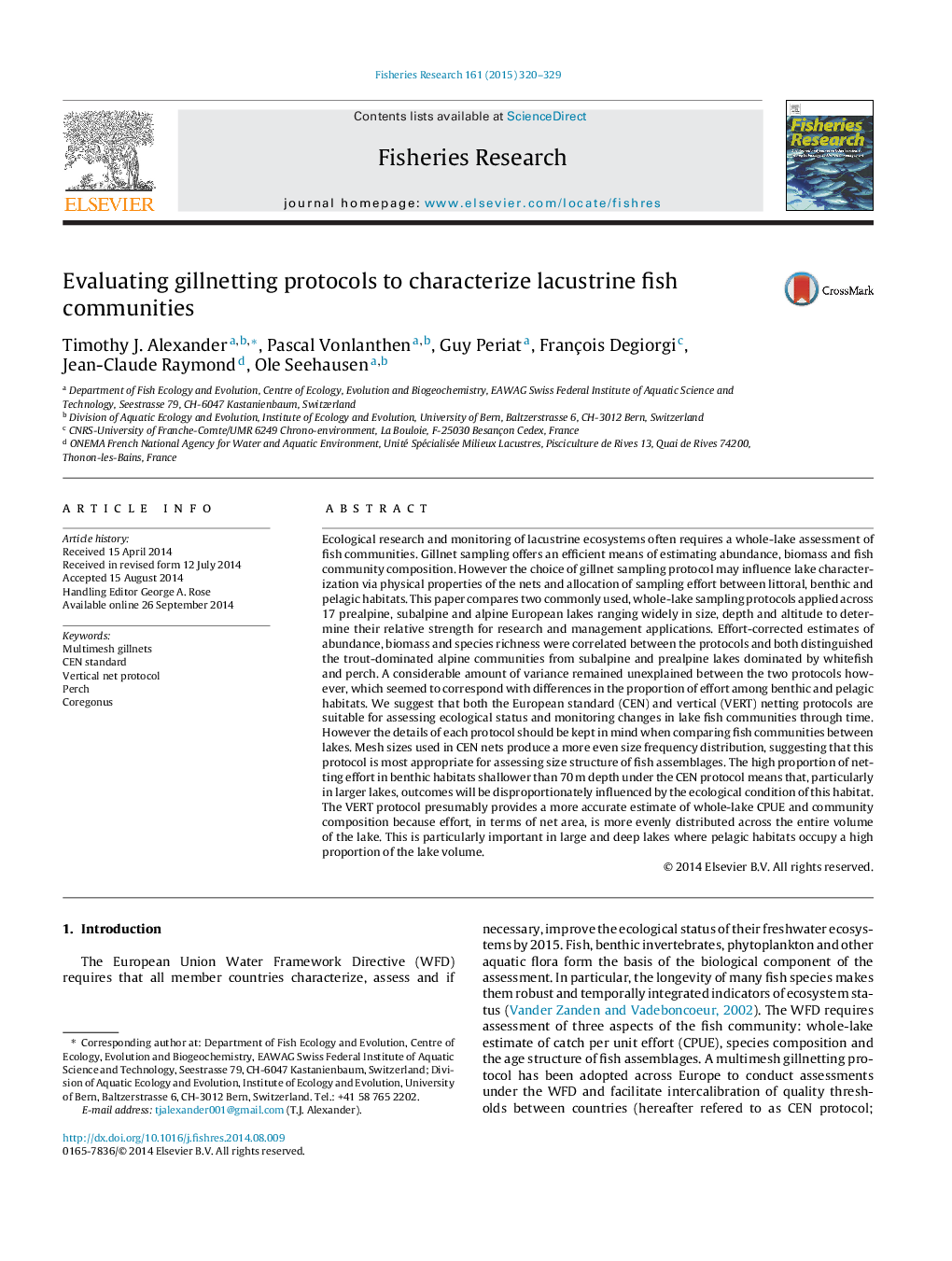| کد مقاله | کد نشریه | سال انتشار | مقاله انگلیسی | نسخه تمام متن |
|---|---|---|---|---|
| 6385844 | 1626807 | 2015 | 10 صفحه PDF | دانلود رایگان |
Ecological research and monitoring of lacustrine ecosystems often requires a whole-lake assessment of fish communities. Gillnet sampling offers an efficient means of estimating abundance, biomass and fish community composition. However the choice of gillnet sampling protocol may influence lake characterization via physical properties of the nets and allocation of sampling effort between littoral, benthic and pelagic habitats. This paper compares two commonly used, whole-lake sampling protocols applied across 17 prealpine, subalpine and alpine European lakes ranging widely in size, depth and altitude to determine their relative strength for research and management applications. Effort-corrected estimates of abundance, biomass and species richness were correlated between the protocols and both distinguished the trout-dominated alpine communities from subalpine and prealpine lakes dominated by whitefish and perch. A considerable amount of variance remained unexplained between the two protocols however, which seemed to correspond with differences in the proportion of effort among benthic and pelagic habitats. We suggest that both the European standard (CEN) and vertical (VERT) netting protocols are suitable for assessing ecological status and monitoring changes in lake fish communities through time. However the details of each protocol should be kept in mind when comparing fish communities between lakes. Mesh sizes used in CEN nets produce a more even size frequency distribution, suggesting that this protocol is most appropriate for assessing size structure of fish assemblages. The high proportion of netting effort in benthic habitats shallower than 70Â m depth under the CEN protocol means that, particularly in larger lakes, outcomes will be disproportionately influenced by the ecological condition of this habitat. The VERT protocol presumably provides a more accurate estimate of whole-lake CPUE and community composition because effort, in terms of net area, is more evenly distributed across the entire volume of the lake. This is particularly important in large and deep lakes where pelagic habitats occupy a high proportion of the lake volume.
Journal: Fisheries Research - Volume 161, January 2015, Pages 320-329
